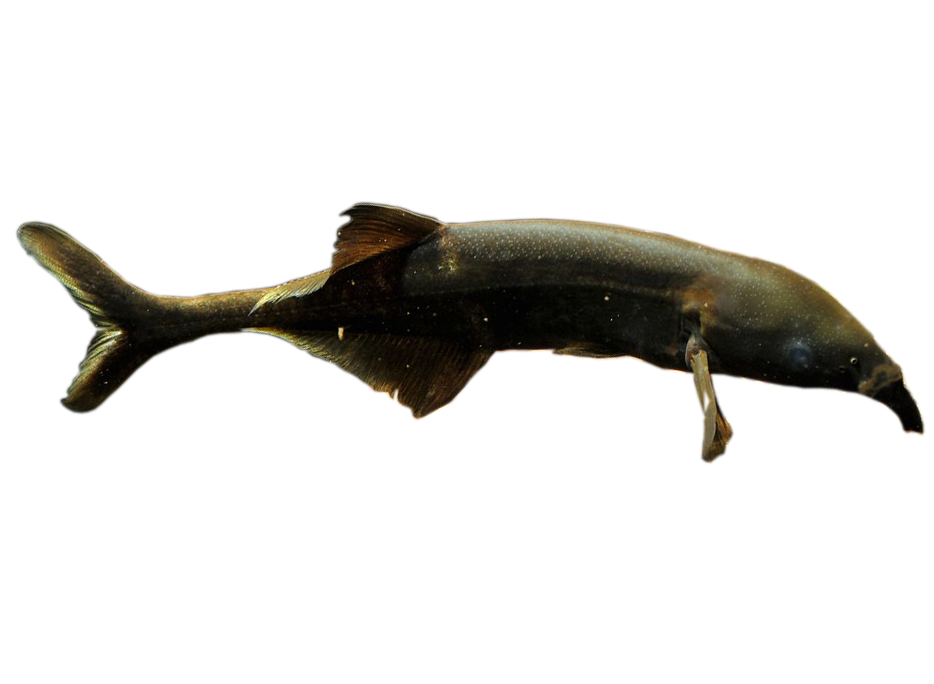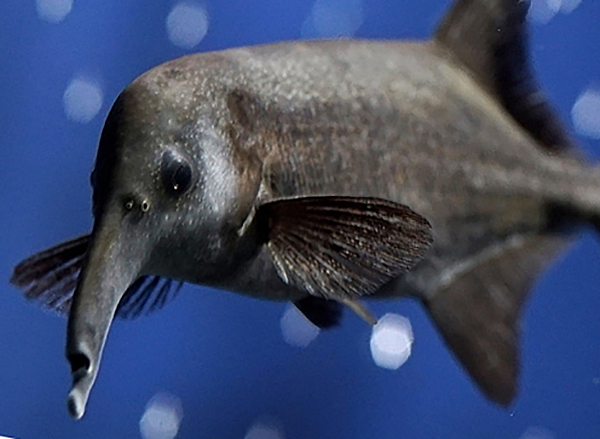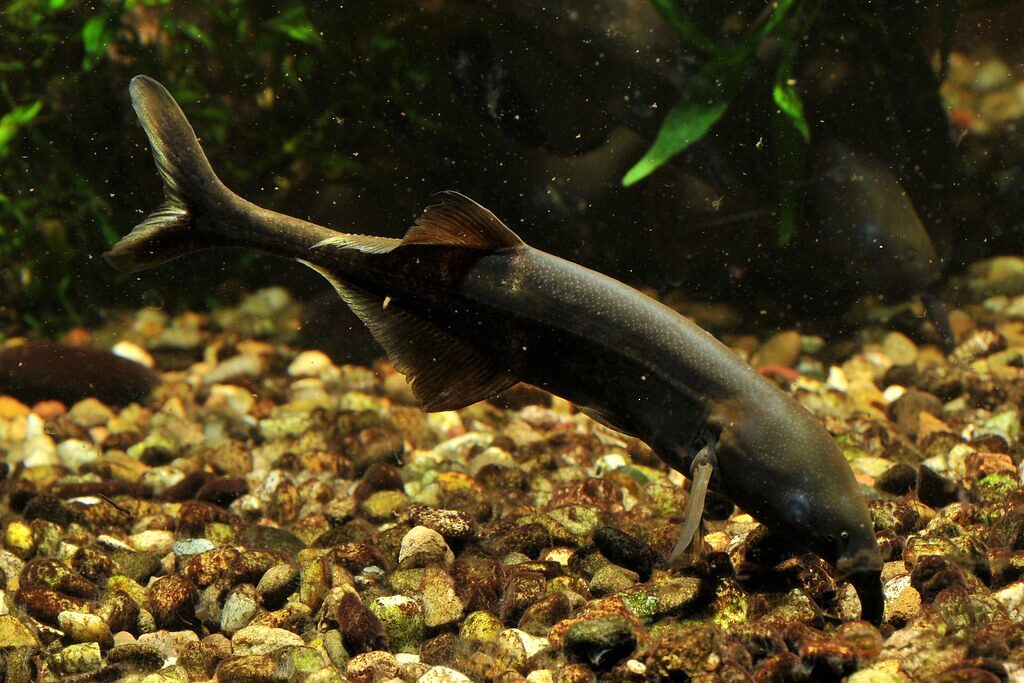Peter’s Elephantnose Fish
Gnathonemus petersii

Speaks “electrical”
The “trunk” of the elephantnose fish – and much of the rest of the rest of the fish’s head – are covered with masses of a kind of cell that senses electricity! The electrical signals can be used to communicate with other elephantnose fish.
Different groups of elephantnose fish have different electrical dialects. When an elephantnose fish wants to mate, it listens for another one that speaks the “right” dialect of “electrical”. There are more than 200 species of elephantnose fish.

Fish with a trunk
Do you see the fish with a trunk? It’s not actually a proper trunk but more a kind of extension of the fish’s mouth. It’s not hard to guess where the elephantnose fish got its name from!
The elephantnose fish has a very large brain in relation to its body. In comparison with its body weight, its brain is actually bigger than ours!
Uses electricity to find its way
The Peter’s Elephantnose Fish uses its ”trunk” to poke about in the bottom sediment for food and to defend itself. But the trunk also has another function. In the rear of its body, the fish has an organ that emits electrical signals. These signals bounce off the surroundings and back to the fish’s head and trunk.
The elephantnose fish is active at night, and the water it lives in is often murky. Yet it can still orient itself and find food – thanks to its electrical sense.

Distribution worldwide

Rivers of
western and
central Africa.
White marking = Distribution
Threat based on the Red List

Trade regulations
CITES: Not listed.